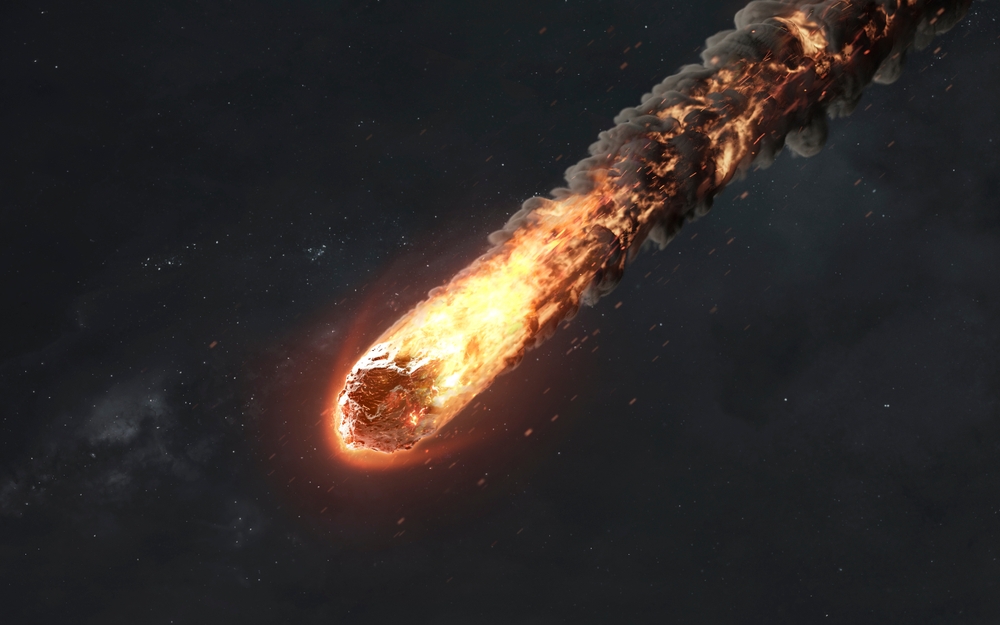A Chaunacops (a genus of bony fish in the sea toad family Chaunacidae) is seen at a depth of 1388.65 meters on Seamount SF2 inside the Nazca-Desventuradas Marine Park. All images courtesy of Schmidt Ocean Institute, shared with permission
Stretching thousands of miles off Chile’s coast to Rapa Nui, also known as Easter Island, the Salas y Gómez Ridge is a vast underwater mountain range in the Pacific Ocean. Seventy-three percent of the region is part of the high seas, which is under international control and vastly underexplored. The Salas y Gómez Ridge is one of the most biologically productive regions in the world, and thanks to researchers with the Schmidt Ocean Institute, we now know more about the life that thrives there.
During a recent 40-day expedition, an international team of scientists discovered that the area is home to 160 species not known to live in the region, 50 of which are thought to be entirely new to researchers. The team primarily studied 10 of the approximately 110 seamounts near the western edge of the ridge closest to Rapa Nui. This expedition follows a similar trip in January to the Nazca Ridge, which connects to the Salas y Gómez Ridge, that revealed approximately 100 new species.
Images gathered from remote-operated vehicles highlight the regions’ wild diversity, spotlighting mollusks, sea stars, glass sponges, sea urchins, and crabs, some of which hadn’t been seen previously. Included are the bright right, spiny Chaunacops that’s part of the sea toad family, the scarcely seen whiplash squid, and a spiky squat lobster hiding among coral.
Because of the findings, the area is under consideration for protected status, although only Chile and Palau have ratified the U.N. treaty to do so. The measure requires 60 countries to formally adopt the agreement.

An urchin retrieved as a sample by ROV SuBastian is handled by a researcher before being taken to the laboratory on Research Vessel Falkor (too) for cataloging and analysis. Photo by Alex Ingle

A rarely-seen whiplash squid (Mastigopsis hjorti) documented at 1105 meters depth after inking at Seamount 17 (Ikhtiandr) in the Nazca Ridge. Image by ROV SuBastian

Detail of a sponge documented at 1238.67 meters depth at Seamout 10, also known as Guyot Baral. Image by ROV SuBastian

A squat lobster is documented on sediment at 1392 meters deep on Seamount SF2 inside the Nazca-Desventuradas Marine Park. An international group of scientists aboard a recent Schmidt Ocean Institute expedition believe they have discovered more than 100 new species living on seamounts off the coast of Chile, including deep-sea corals, glass sponges, sea urchins, amphipods, and squat lobsters. Image by ROV SuBastian

A spiraling coral documented at 1419 meters deep on Seamount JF1, within the bounds of the Mar de Juan Fernández Multiple Uses Marine Protected Area off the coast of central Chile. Image by ROV SuBastian

A squat lobster documented in coral at a depth of 669 meters on Seamount JF2. An international group of scientists aboard a recent Schmidt Ocean Institute expedition believe they have discovered more than 100 new species living on seamounts off the coast of Chile, including deep-sea corals, glass sponges, sea urchins, amphipods, and squat lobsters. Image by ROV SuBastian

Oblong Dermechinus urchins documented at a depth of 516 meters on Seamount JF2. An international group of scientists aboard a recent Schmidt Ocean Institute expedition believe they have discovered more than 100 new species living on seamounts off the coast of Chile, including deep-sea corals, glass sponges, sea urchins, amphipods, and squat lobsters. Image by ROV SuBastian
Do stories and artists like this matter to you? Become a Colossal Member today and support independent arts publishing for as little as $5 per month. The article Researchers Uncover Hundreds of New Marine Species in the Underwater Mountain Ecosystems of the Pacific Ocean appeared first on Colossal.


















;)

Discussion about this post